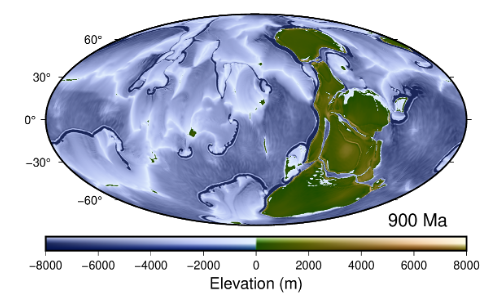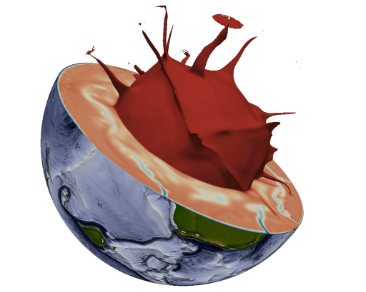Co-evolution of planets and life
This project explores the interaction between Earth's physical conditions and life evolution, emphasizing the limitations of traditional approaches and the need for advanced numerical models. It aims to investigate how planetary dynamics and biological evolution co-evolve, focusing on feedback mechanisms between geodynamics, climate, surface processes, and photosynthetic life.

The emergence of complex ecosystems is expected to be intrinsically related with the dynamic of Earth’s physical conditions (Zaffos et al. 2017). Some of the largest episodes of degassing from mantle plume related volcanism correlate with massive extinctions (Jones et al. 2016), followed by explosive life radiations (Benton and Zhong-Qiang 2012). But life, by interacting with the land surfaces, oceans and atmosphere can reshape the physical conditions on the planet thereby establishing complex feedback (Dahl and Arens 2020). The study of life evolution in relation with the physical environment has been mainly coming from a top-down approach by disassembling the current complexity. Measurements are taken from field samples, from which associations are derived to infer the functioning and evolution of these systems (Weber and Agrawal 2012). However, a disassembly approach provides only limited understanding about how parts assemble into a whole thereby causing emergent behavior, and specifically how abiotic and biotic components interact to shape the overall dynamic of the Earth’s system. Numerical models of planetary dynamics including life offer an alternative approach. In the past 20 years, progress has been made in modelling the dynamics of planetary interior and generate earth-like tectonic and volcanic features like mid-ocean ridges, seafloor spreading style (Coltice et al. 2013), continental drift (Rolf et al. 2014), tectonic plate distribution (Mallard et al. 2016), elevation (Arnould et al. 2018), and plume properties (Arnould et al. 2020). In complement, novel life evolution models integrate spatially explicit dispersal with eco-evolutionary dynamics and speciation to simulate realistic dynamic of life over long time periods (Rangel et al. 2018, Saupe et al. 2019). Since the eco-evolutionary dynamic of life regulate planetary processes and climate (Lenton et al. 2012), models should include how photosynthetic autotrophs regulate erosion, weathering and carbon sinks. While earth system models considering vegetation feedback have been used to simulate planetary climate (Kay et al. 2015), plant phenotypes in those models are assumed modern and static (Berzaghui et al. 2020). Therefore, the main frontiers in Earth's system modeling are to study the co-evolution of physical properties and life over a very long-time scale (Rogger et al. 2024). In this project, we aim to use simulations to study the feedback between life and planets by combining processes of geodynamics, climate, surface processes and biological evolution. We will ask the following questions: (1) How does the change in planetary interior connect with the functional evolution of photosynthetic life on the surface? (2) How is planetary abiotic dynamics influenced in turn by the evolution of photosynthetic autotrophs?

Contact information

Julian Rogger

Anna Lewkowicz